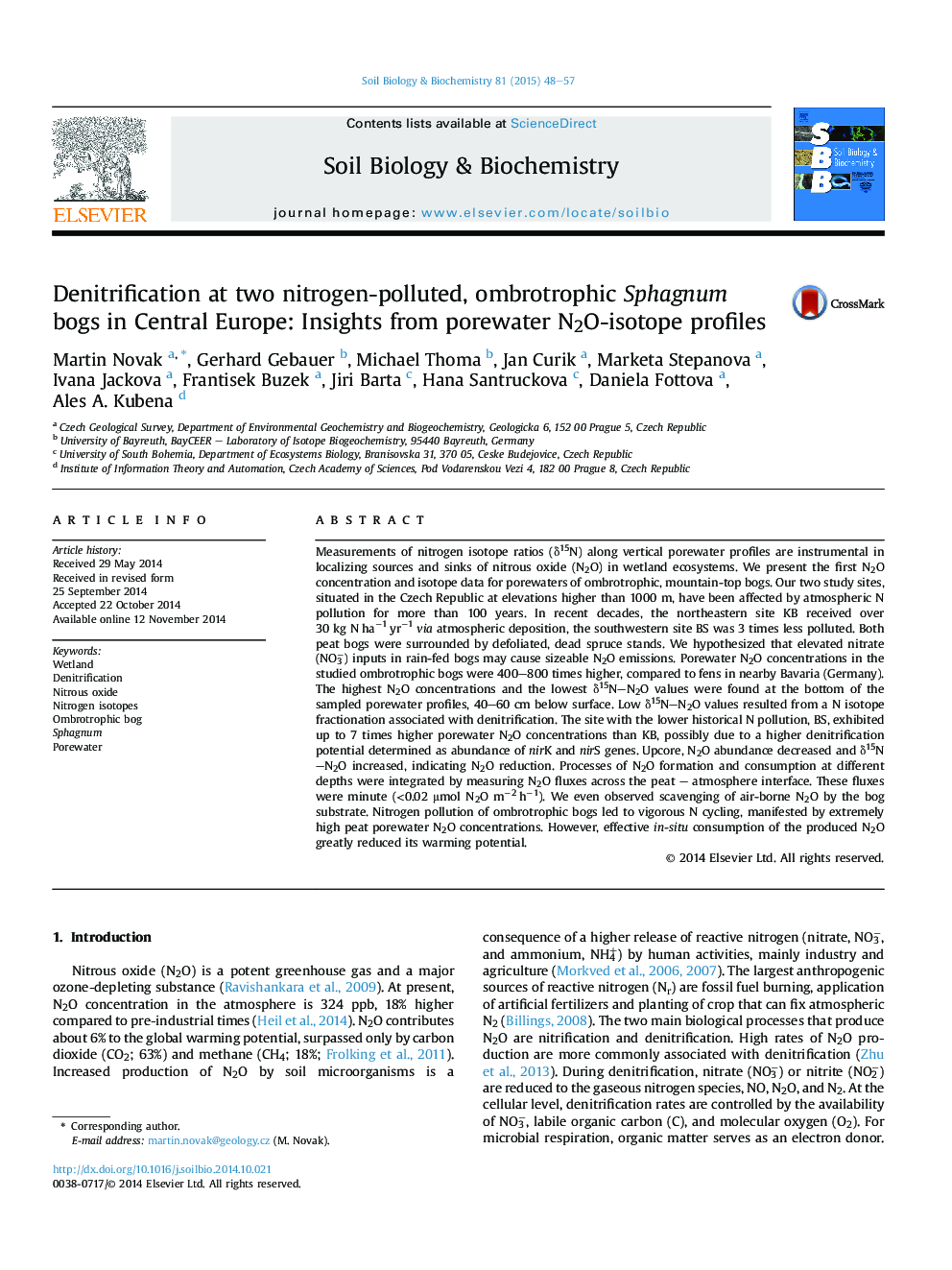| کد مقاله | کد نشریه | سال انتشار | مقاله انگلیسی | نسخه تمام متن |
|---|---|---|---|---|
| 2024412 | 1542603 | 2015 | 10 صفحه PDF | دانلود رایگان |

• We report the first porewater N2O isotope data for N-polluted rain-fed bogs.
• Downcore, N2O concentrations were 800 times higher than at minerotrophic fens.
• Despite that, efficient N2O reduction in situ prevented high N2O emissions from peat.
• Residual N2O–N in porewater was isotopically heavier than deposited N and substrate N.
• Bogs receiving 50 kg N/ha/yr via rainfall may still act as a sink for air-borne N2O.
Measurements of nitrogen isotope ratios (δ15N) along vertical porewater profiles are instrumental in localizing sources and sinks of nitrous oxide (N2O) in wetland ecosystems. We present the first N2O concentration and isotope data for porewaters of ombrotrophic, mountain-top bogs. Our two study sites, situated in the Czech Republic at elevations higher than 1000 m, have been affected by atmospheric N pollution for more than 100 years. In recent decades, the northeastern site KB received over 30 kg N ha−1 yr−1via atmospheric deposition, the southwestern site BS was 3 times less polluted. Both peat bogs were surrounded by defoliated, dead spruce stands. We hypothesized that elevated nitrate (NO3−) inputs in rain-fed bogs may cause sizeable N2O emissions. Porewater N2O concentrations in the studied ombrotrophic bogs were 400–800 times higher, compared to fens in nearby Bavaria (Germany). The highest N2O concentrations and the lowest δ15N–N2O values were found at the bottom of the sampled porewater profiles, 40–60 cm below surface. Low δ15N–N2O values resulted from a N isotope fractionation associated with denitrification. The site with the lower historical N pollution, BS, exhibited up to 7 times higher porewater N2O concentrations than KB, possibly due to a higher denitrification potential determined as abundance of nirK and nirS genes. Upcore, N2O abundance decreased and δ15N–N2O increased, indicating N2O reduction. Processes of N2O formation and consumption at different depths were integrated by measuring N2O fluxes across the peat – atmosphere interface. These fluxes were minute (<0.02 μmol N2O m−2 h−1). We even observed scavenging of air-borne N2O by the bog substrate. Nitrogen pollution of ombrotrophic bogs led to vigorous N cycling, manifested by extremely high peat porewater N2O concentrations. However, effective in-situ consumption of the produced N2O greatly reduced its warming potential.
Journal: Soil Biology and Biochemistry - Volume 81, February 2015, Pages 48–57